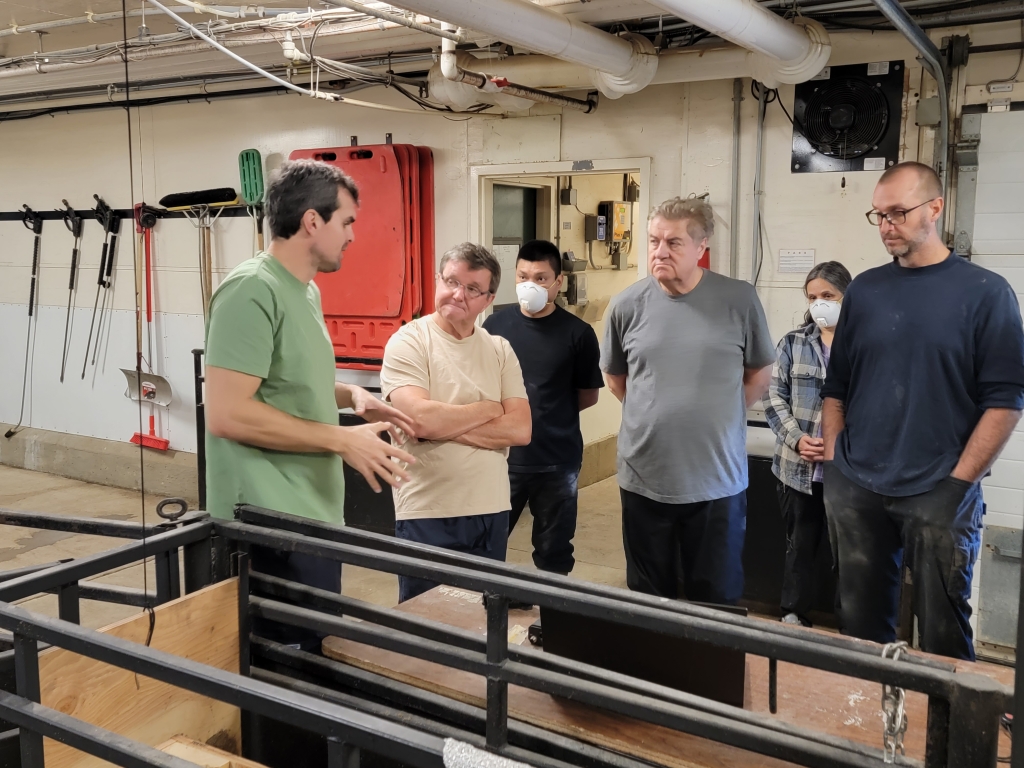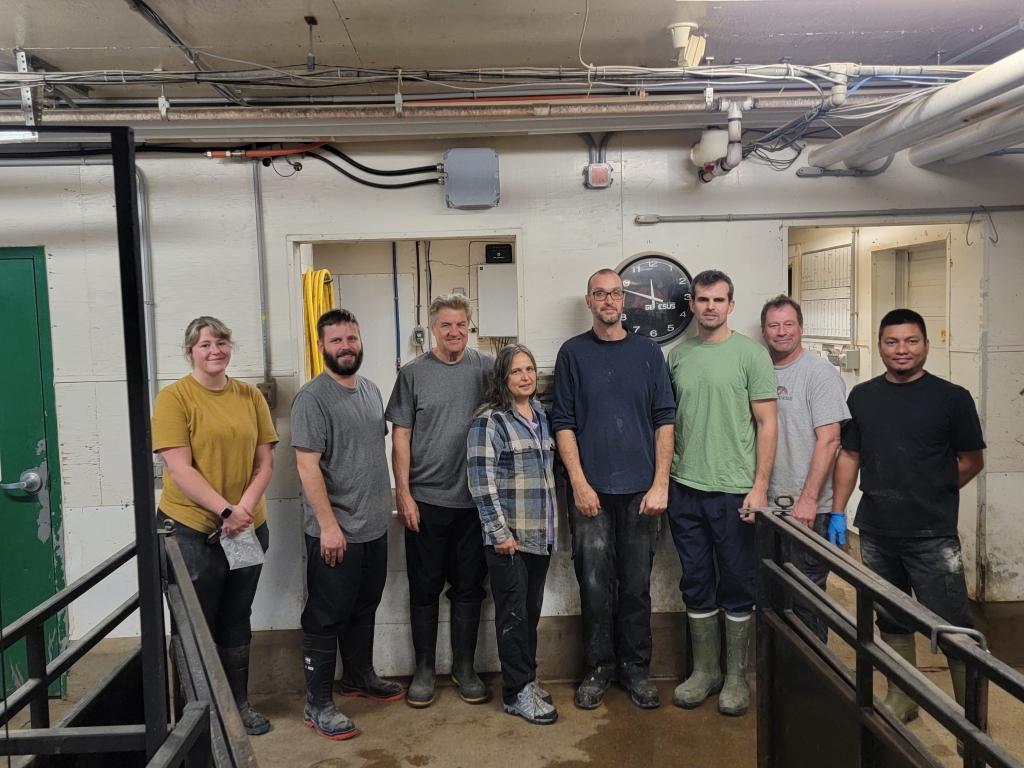
Researchers in Lacombe are leading the world in a series of projects aimed at tailoring pig genetics to create high-quality primal cuts.
Around the globe, different buyers have diverging demands when they’re selecting primals – the most expensive parts of the carcass, says Lethbridge-based livestock breeder Bob Kemp, vice-president for research, development and genetic programs at Genesus Inc.
“If we look at some of our export markets – Spain, Italy, for instance – they are very interested in a ham product: Very high quality, dry-cured hams, with appropriate fat and marbling. As an international company, we’re interested in . . . ways to incorporate quality and composition for different primals in our (breeding) program,” Kemp said in an interview with Prairie Hog Country.
“We’re trying to understand what’s controlling quality, how to properly measure quality and composition in the different primals. In previous work, Lacombe has developed a number of different technologies that work from a grading perspective per se,” said Kemp.
“But we don’t know if they’ll work from a quality perspective, so the idea is to evaluate the measurements from these different primals to see if they can be used for selection, and then to investigate utilizing genomic information as well to investigate the genetic control of the different measures in the different primals and the correlation between them.”
“The final component would be to then develop selection programs to allow for selection for composition and quality in different primals.”
Genesus accepted the opportunity about two and a half years ago, when Agriculture Canada’s Lacombe Research and Development Centre was seeking partners to collaborate on a new meat quality project. Partners in the project would look at evaluating quality in various primal cuts, and then determine the genetic factors that would allow reproduction of those traits to meet specific targets.

Rutherford.

Running point is phenomics scientist Manuel Juárez from the Lacombe Centre, with the genomics work undertaken by geneticist Graham Plastow and his team at the University of Alberta.
“Around the world, packers and geneticists and pork producers, they are always looking at ways of differentiating and looking at getting an advantage in what is a very competitive market,” said Juárez.
“The data that we are collecting and the comprehensive evaluation of the primals is quite unique. We haven’t seen anybody who has done this in the phenotypes. Nobody has been yet to the point that they can generate the numbers that we do. There are other people working on similar approaches, but not the way that we are,” he said.
The quality evaluation and genetics technology now being developed at Lacombe will offer packers and producers an opportunity to achieve premium prices for hogs grown to fit the markets into which they are to be sold.
“For packers, this is key because a good belly can generate 30 per cent more revenue than a commodity belly. So a premium cut can make quite a bit of money in comparison to a commodity primal,” said Juárez.
The ability to guarantee that quality is essential, he said.
“So, starting with genetics, it’s massive, because your pool is already better because your genetics are better.
“You can take this whole batch and send it to Spain or Japan or wherever. But how can you guarantee the quality? You can do selection afterwards and maybe move the bar once, but if your genetics are good . . . then the chances of having that high-quality product are good.”
Making this opportunity attractive to producers may require some incentive from the packers buying their hogs, said Juárez.
The program Genesus and its producers have with the Heritage line at Maple Leaf in Lethbridge is an example of how an incentive program can work, he said.
“I think it’s in the benefit of everyone because you can see right now the pork prices are going down. You have a good relationship with your clients and you can send them the right product every time, you can have a large amount of high-quality product.


“The market’s very competitive. We are not the only ones selling good pork around the world. We need to keep working on this and get better and better.”
Lacombe first transitioned to Genesus bloodlines about six years ago. In that time, Juárez has built a database including phenotype details (physical characteristics), blood samples and DNA samples for each pig.
That ongoing database will serve the series of projects with a goal of genetically selecting pigs by phenotype to suit specific requirements, and then breeding those pigs to fit specific targets.
A wide range of genetic companies were invited to participate, said Juárez.
“We were trying to find a company that had a focus on quality, because that is our work here. But also, we didn’t want a company that was so large that they were doing their own research and they couldn’t be pretty much interested in us,” he said.
“Genesus was interested, it worked for us, and that’s why we have kept going with Genesus. In the last round of the swine cluster, where we were putting together a project to continue this work with Genesus, we actually invited several other genetic companies and many of them said they were interested. But at the time, they couldn’t commit.”
While some results are now in, partners in the project anticipate publishing their findings toward the end of the year, possibly including a presentation at the Banff Pork Seminar in January of 2024.
All of the findings will be publicly available, with opportunities for other genetics companies to become involved as the studies progress. •
— By Brenda Kossowan
Photos courtesy of Art Goelema.







